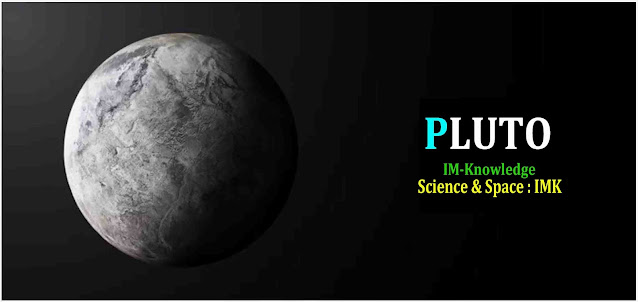 |
| Pluto |
Discover fascinating facts about Pluto and its unique characteristics in this comprehensive article. Explore the history, size, composition, and more about this distant dwarf planet. Join us on an exciting journey through the wonders of our solar system.
Introduction:
Pluto, the enigmatic dwarf planet, has captivated the imaginations of astronomers and space enthusiasts for decades. Once considered the ninth planet in our solar system, it now resides in the Kuiper Belt, a region beyond Neptune. In this article, we will delve into the intriguing details of Pluto's history, physical features, and other fascinating aspects. Join us as we unravel the mysteries of this distant celestial body.
History of Pluto:
Pluto's discovery dates back to 1930 when American astronomer Clyde Tombaugh observed a faint celestial object beyond Neptune. It was named Pluto, inspired by the Roman god of the underworld. For several decades, Pluto was considered the ninth planet in our solar system until its reclassification in 2006.
Pluto's Classification:
Pluto is now classified as a dwarf planet, a distinct category introduced by the International Astronomical Union (IAU). This reclassification occurred due to the discovery of other similar objects in the Kuiper Belt.
Pluto's Size:
Pluto has a diameter of approximately 2,377 kilometers, making it smaller than Earth's Moon. Its size places it in the category of the smallest known dwarf planets in our solar system.
Pluto's Atmosphere:
Pluto possesses a thin atmosphere composed mainly of nitrogen, with traces of methane. This atmosphere extends above its surface, giving Pluto a distinct appearance.
Pluto's Moons:
Pluto has five known moons, the largest and most notable being Charon. Other moons include Hydra, Nix, Kerberos, and Styx. Charon, with a diameter of approximately 1,208 kilometers, is the largest of Pluto's moons.
Pluto's Orbit:
Pluto follows an elliptical orbit around the Sun. Due to its eccentric orbit, Pluto's distance from the Sun varies significantly. At its closest, Pluto is about 4.67 billion kilometers away from the Sun, while at its farthest, it can be over 7.4 billion kilometers away.
Pluto's Composition:
Ice:
Pluto's surface primarily consists of ice, including frozen nitrogen, methane, and carbon monoxide. These ices create a reflective surface, contributing to Pluto's brightness.
Rock:
Beneath the icy surface, Pluto contains a rocky core composed of various rock-forming elements. This rocky interior adds to the dwarf planet's overall structure.
Nitrogen:
Nitrogen, a volatile compound, plays a crucial role in Pluto's composition. It forms a significant part of Pluto's thin atmosphere and makes up a portion of the surface ice.
Pluto's Exploration:
New Horizons Mission:
In 2015, NASA's New Horizons spacecraft provided the first close-up images and data of Pluto. This groundbreaking mission revealed unprecedented details about the dwarf planet, including its surface features and composition.
Pluto's Controversy:
Pluto's Demotion:
Pluto's reclassification as a dwarf planet in 2006 sparked considerable controversy and debate among scientists and the general public. The decision by the IAU redefined the criteria for classifying planets, leading to varying opinions on Pluto's status.
Pluto vs. Planets:
Debate on Pluto's Status:
The debate surrounding Pluto's classification raises questions about the definition of a planet. Some argue that Pluto, with its unique characteristics, should regain its planetary status, while others support its classification as a dwarf planet.
Pluto's Surface Features:
Sputnik Planitia:
Sputnik Planitia is a vast plain on Pluto's surface composed of frozen nitrogen and other volatile ices. This region exhibits a polygonal pattern caused by convection processes beneath the icy crust.
Cthulhu Regio:
Cthulhu Regio is a dark region on Pluto's surface named after a fictional cosmic entity. It is an area with a large accumulation of tholins, complex organic compounds formed through chemical reactions involving methane and nitrogen.
Pluto's Atmosphere:
Methane:
Methane is one of the gases present in Pluto's atmosphere. Its presence contributes to the reddish-brown tint observed in certain areas of Pluto's surface.
Nitrogen:
Nitrogen is the dominant component of Pluto's atmosphere, making up the majority of its composition. This volatile gas plays a crucial role in Pluto's climate and weather patterns.
Pluto's Seasons:
Pluto's Year:
A year on Pluto, known as its orbital period, lasts approximately 248 Earth years. This extended year contributes to the extreme seasonal variations experienced on the dwarf planet.
Pluto's Climate:
Pluto's climate is characterized by frigid temperatures, with average surface temperatures dropping below -230 degrees Celsius (-382 degrees Fahrenheit). The combination of nitrogen and methane in its atmosphere influences its weather patterns.
Comparative Planetology:
Pluto vs. Earth:
Comparing Pluto to Earth highlights the stark differences between the two celestial bodies. While Earth is a terrestrial planet with a diverse biosphere, Pluto's harsh environment and distant location make it inhospitable for life as we know it.
The IAU's Definition of a Planet:
IAU:
The International Astronomical Union (IAU) is the organization responsible for defining and classifying celestial objects. Their definition of a planet played a pivotal role in the controversy surrounding Pluto's status.
Planet Definition:
According to the IAU, a planet is a celestial body that orbits the Sun, has sufficient mass for self-gravity to overcome rigid body forces, and has cleared its orbit of other debris. Pluto's classification as a dwarf planet stems from not meeting the final criterion.
Exoplanets vs. Pluto:
Exoplanets:
Exoplanets are planets that orbit stars outside our solar system. Studying exoplanets provides valuable insights into planetary formation and the potential for habitable worlds beyond our own.
The Kuiper Belt:
The Kuiper Belt is a region of the solar system beyond Neptune that contains numerous icy objects, including Pluto. It is named after Gerard Kuiper, the astronomer who predicted its existence.
Dwarf Planets in the Solar System:
Apart from Pluto, several other dwarf planets reside in our solar system. Ceres, Eris, Haumea, and Makemake are among the most well-known dwarf planets. Each of these objects shares similarities with Pluto while possessing unique characteristics of their own.
The Future of Pluto Exploration:
Future missions and technological advancements hold the potential for further exploration of Pluto and the Kuiper Belt. Continued study of these distant realms will enhance our understanding of the solar system's history and formation.
Frequently Asked Questions (FAQs):
- What is the average distance between Pluto and the Sun?
Ans: Pluto's average distance from the Sun is approximately 5.9 billion kilometers (3.7 billion miles).
- How many moons does Pluto have?
Ans: Pluto has five known moons: Charon, Hydra, Nix, Kerberos, and Styx.
- Can Pluto support life?
Ans: Due to its extreme cold temperatures and inhospitable conditions, Pluto is not considered capable of supporting life as we know it.
- Why was Pluto reclassified as a dwarf planet?
Ans: Pluto was reclassified as a dwarf planet by the International Astronomical Union (IAU) due to its failure to meet the criterion of clearing its orbit of other debris.
- What is the New Horizons mission?
Ans: The New Horizons mission was a NASA spacecraft mission that provided the first close-up images and scientific data of Pluto in 2015.
- How did Pluto get its name?
Ans: Pluto was named after the Roman god of the underworld. The name was proposed by an 11-year-old girl named Venetia Burney.
Conclusion:
Pluto, with its intriguing history, unique characteristics, and controversial status, continues to fascinate scientists and the public alike. From its discovery to the exploration by the New Horizons mission, our understanding of this distant world has grown significantly. As we look to the future, further missions and advancements in technology will uncover more about Pluto and its place in the vast expanse of our solar system.
Learn more about what’s in our Solar System with our Facts About Solar Winds; the planets Earth, Mercury, Venus, Mars, Jupiter, Saturn, Uranus and Neptune and the Moon.
Thank you for Visiting !!! 💕



Please do not enter any spam link in the comment box.